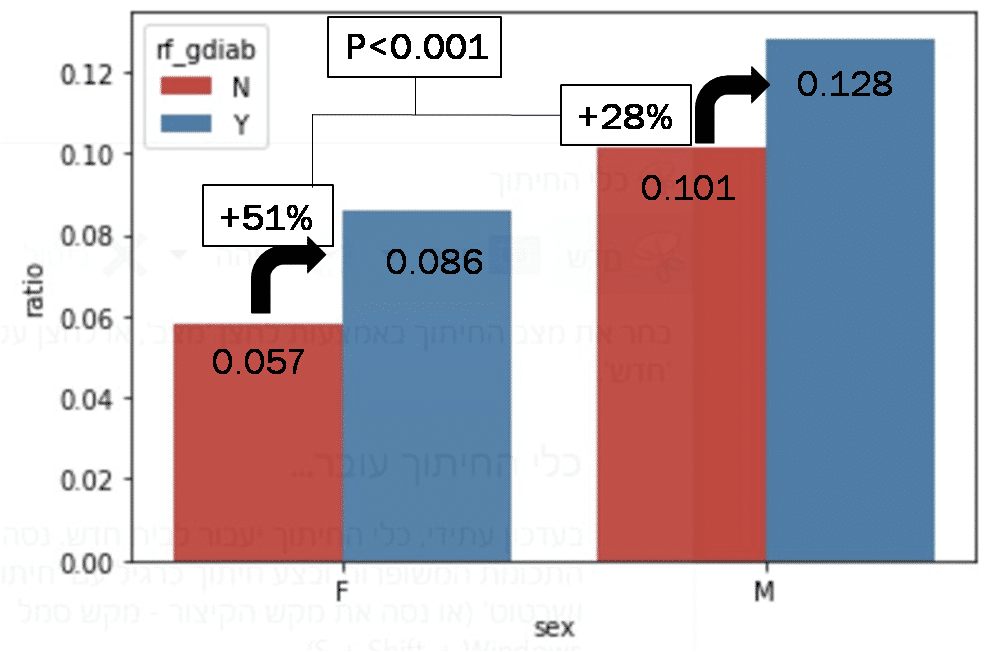
Same Disease - Different Effect: Maternal Diabetes Impact on Bbirth Weight by Fetal Sex
2Sackler School of Medicine, Tel Aviv University, Israel, ישראל
3Department of Obstetrics and Gynecology, Hillel Yaffe Medical Center, Hadera, Israel, ישראל
4Institute of Technology, Technion, ישראל
5Department of Obstetrics and Gynecology, Mayanei Hayeshua Medical Center, ישראל
6Department of Microbiology and molecular genetics, Institute of medical research Israel-Canada, ישראל
7Faculty of Medicine, The Hebrew University of Jerusalem, ישראל
8*This research was carried out in the framework of hackathon held by, The Israel Society for Gender and Sex Conscious Medicine, ישראל
Background: Male sex is an independent risk factor for adverse pregnancy outcomes. Gestational diabetes mellitus (GDM) is associated with Large for gestational age neonates and is more prevalent in male fetus pregnancies. It was previously described that fetal glucose metabolism is affected by fetal sex.
Objective: To examine whether neonatal birthweight of diabetic mothers is affected differently by GDM according to fetal sex. We hypothesize that female fetuses exhibit protective mechanisms making them less prone to weight gain attributed to maternal hyperglycemia.
Methods: We conducted a retrospective normalized cohort analysis, using the open database of 2017 Natality Data from the National Vital Statistics System of the National Center for Health Statistics. We used the two-way ANOVA test to evaluate and compare diabetes impact of fetal birthweight, evaluated as a continuous variable, stratified by fetal sex. Also, we calculated rates of macrosomia (above 4000 grams) among GDM vs. no-GDM pregnancies and compared it by fetal sex.
Results: Of all 3,536,308 births in the US during 2017, 252,522(6.66% of total births) were GDM pregnancies, 3.22% were female infants, and 3.44% were male infants. The delta in median birthweight between GDM vs. no-GDM pregnancies was significantly higher among female pregnancies (p<0.001). Evaluated categorically, female fetus pregnancies had a 51% increase in macrosomic neonates, compared with only 28% increase in male macrosomic neonates (GDM vs. no-GDM).
Conclusion: Unlike our hypothesis, female sex is associated with increased weight gain that is attributed to GDM. Further research is required to discuss the related mechanism.

Powered by Eventact EMS